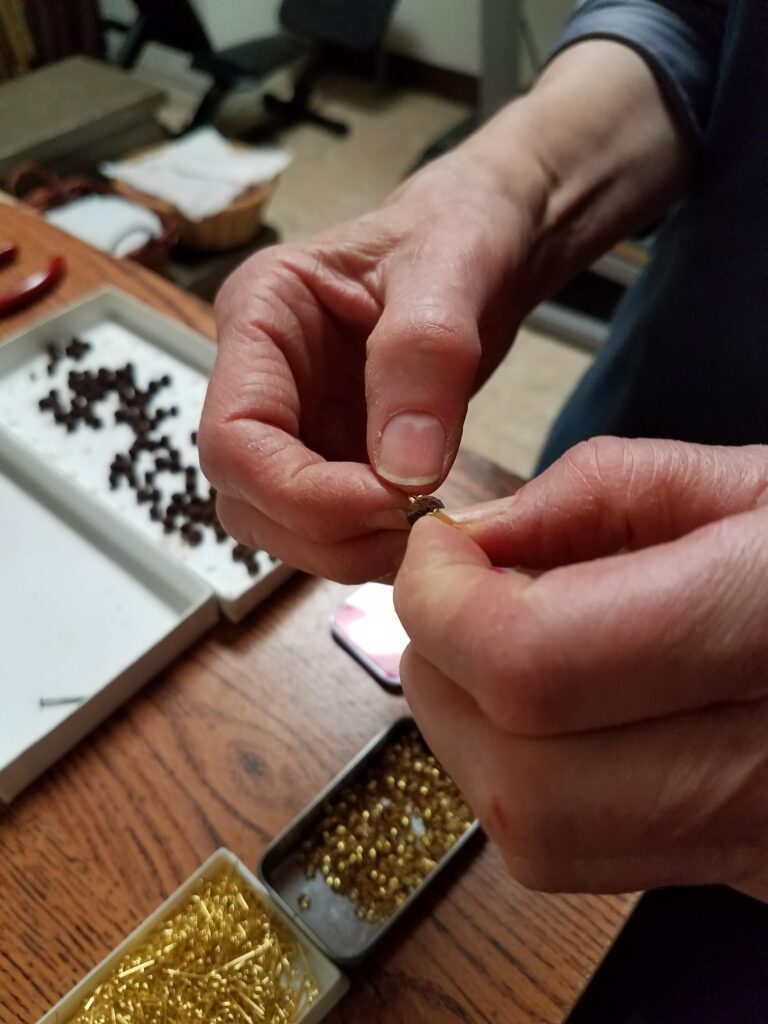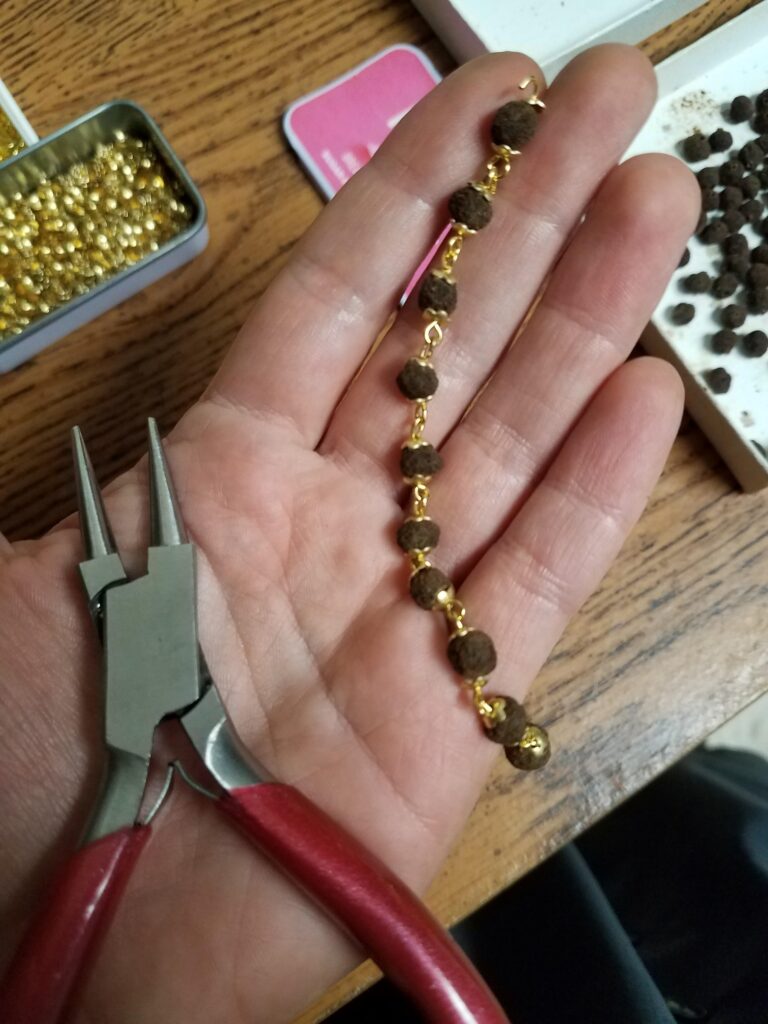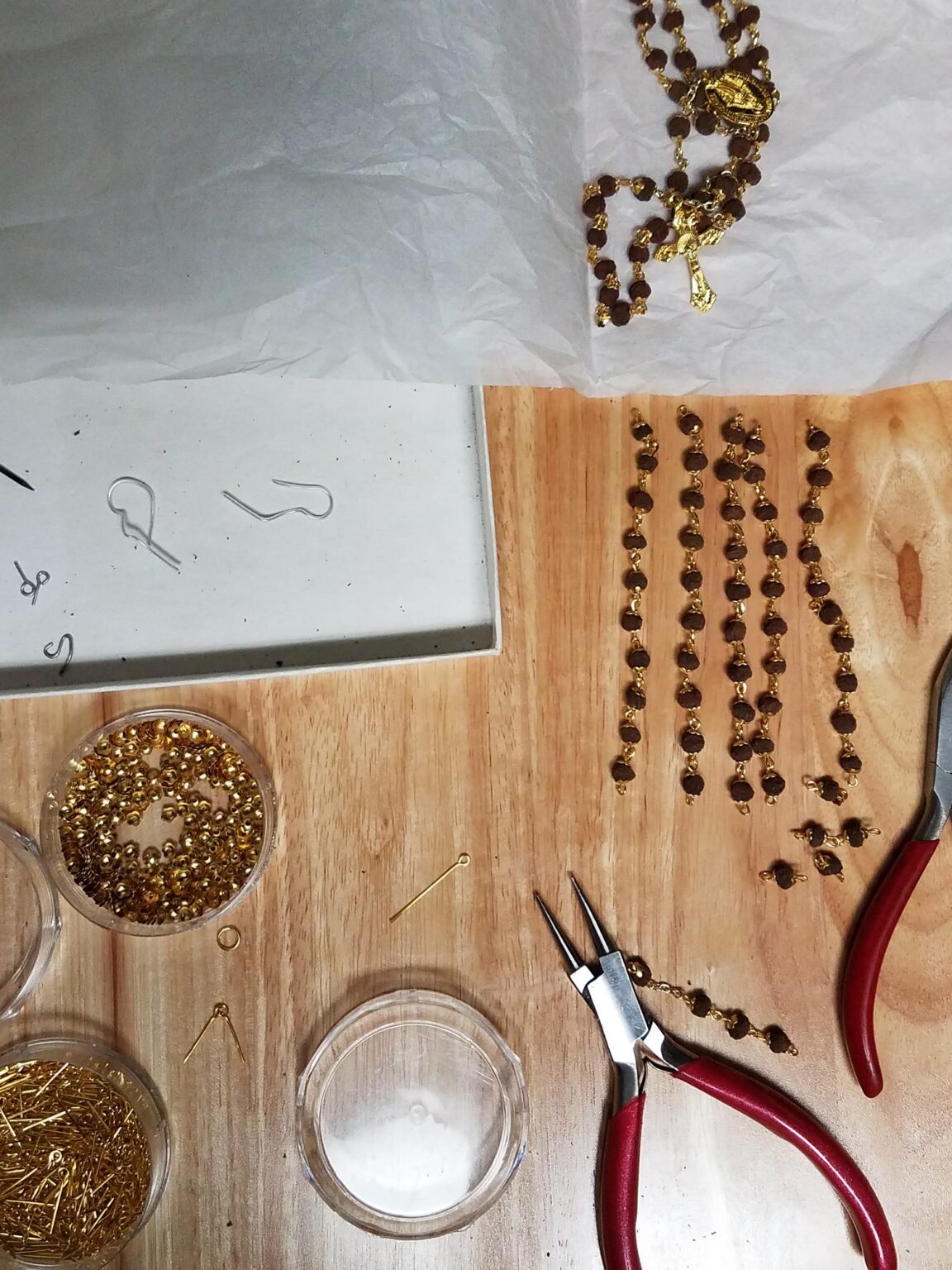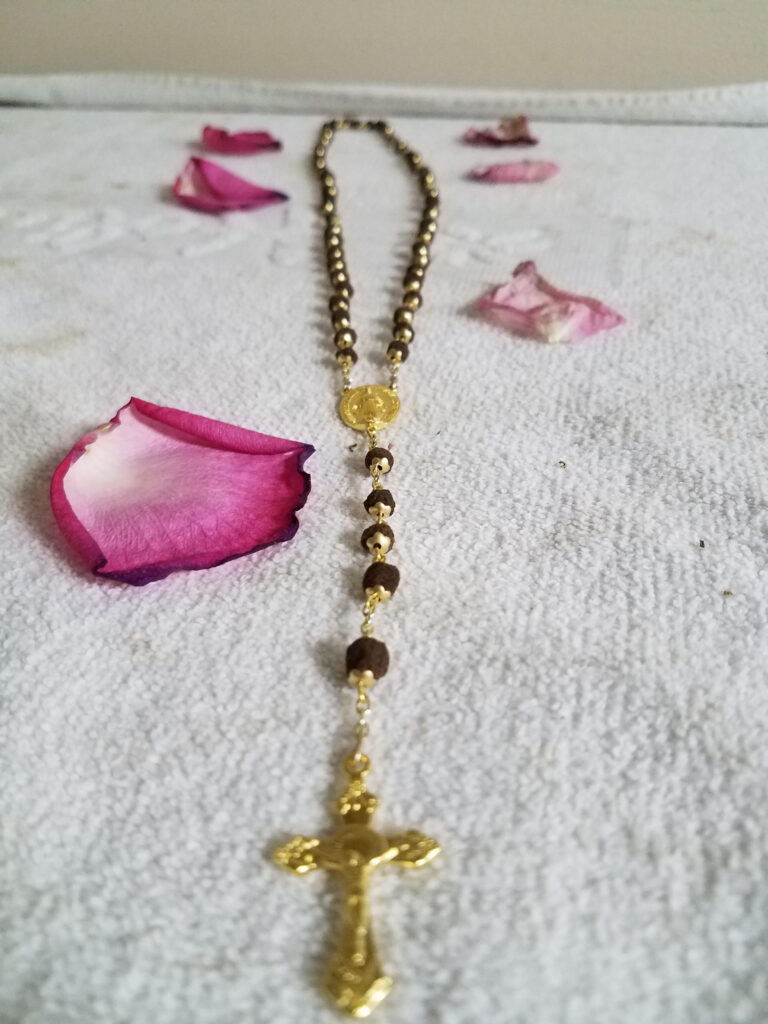Touching Heaven and Earth: From Rose to Rosary
Step 5: Fashioning the Chain
Join us in reading a guest blog series by Sr. Orianne Dyck, a Novice with the Daughters of St. Paul, as she reflects upon the process of creating Rosary beads from rose petals.
Have you ever noticed that when we speak of nature, we usually think of things that are soft and flexible? Things that bend in the wind and have a gentleness about them?
The rose petals, both thriving or dried, as powder, and as workable clay fall into this category.
But nature has a hardness to her too. Rocks and minerals are perhaps the best examples of this. They reveal to us a kind of immovable harshness in the beauty around us. And yet, if we observe, even these unbendable substances are not beyond transformation. The densest rock gives way to a river over the centuries, shifting from a barrier to the flow of a life-giving source into its carrier. The minerals held deepest in the earth may be cut, polished, or melted into forms that reveal the beauty they had hidden within them.
I found myself thinking about nature’s hardness a lot during this last step of the rosary-making process as I pulled out pliers and wire-cutters to wield against metal eye-pins and chain, and plunged into the battle of bending metal to link together the rose-petal beads.
When Sr. Helen first pulled out the eye-pins and a pair of pliers, I found myself gulping and hoping I could do this. I’m not very adept at sewing, and this seemed much more intense. Sr Helen showed me how to use the pliers to push the eye of the eye-pin tightly closed, then slip a bead on (we also added little crowns on either side, which looks cool but also makes it more tricky), and then loop the straight end of the pin closed over the eye of a second eye-pin, forming the beginning of a chain. This is continued until we created a chain of 10 rosary beads – a single decade of a rosary.


It sounds simple enough, but let me tell you, I struggled so much to grip the little bead in a way that would keep the pin from shifting and the crowns from flopping out of place in order for me to grip and manipulate into proper position the straight end of the pin. I was about 3 beads into a decade when I wondered if I should just admit defeat and accept that I wasn’t capable of this… That the eye-pins had a will of their own, and my will could not match it.
And that’s when I started to think…
When we look at a river now cradled by the rock that once barred it, or when we see gold fashioned gracefully into a shape it once resisted, we see two great truths about ourselves reflected in the world around us. The first? That no matter how we harden our own wills with resistance or barricade our own hearts with ire, we are no match for the will and heart of God, for they are goodness itself. The second? God does not give up on us, and we mustn’t underestimate the change that is possible through the slow, steady, tender flow of his love.
I thought of all the love and prayer I had poured over those petals, now these beads. Was I going to give up now? I thought of some of the lessons God had been trying to teach me from the very beginning of my life, and which took me over 20 years to accept. Had he given up? No, he never gave up. He never gave up, right up until the Cross.
That was the moment that God’s patience with me rather shamed me into at least attempting a bit more patience with the metal and myself, rallying me to keep on going.
And finally, after maybe 6 or 7 beads in that first decade, I figured out where to exert pressure when holding the bead and eye and crowns with one hand and moulding the metal with the other. From then on, with the exception of a few tricky little beads that gave me some trouble, I never got frustrated again. Even with the more delicate, precise work of cutting a few little links of chain to string together each decade, Our Father bead, the centerpiece and the crucifix, I was able to keep my patience and focus, until the rosary was linked and assembled.
Scripture makes many references to the image of metal being refined, tested, and forged in fire. I don’t know about you, but before I had worked with metal it was easy for me to see this image in a flash, a moment of intense heat and then the metal perfected, like it was a single frame in a montage of shots of dwarves working the mines in Middle Earth. But the reality of metal goes much deeper than that. The formation of gold in the earth, the process of mining it (a dark, risky, and time-consuming task), the patience and attention to its refining, and the incredible combination of both force of strength and delicacy of artistry that go into moulding it… these add a new weight and depth to the verse:
“The crucible is for silver, and the furnace is for gold,
but the Lord tests the heart.” (Proverbs 17:3)


The crick in my neck, the strain on my eyes, the bruise on my left thumb and pointer finger and the frustration I had to overcome within myself – these weren’t just reminding me of all that the Lord endures with love to refine and fashion me; they were also revealing what he uses to refine and fashion me. He was using this very experience to reveal to me something about his heart, about my heart, and about the beautiful transformation he dreams of for the heart of whoever will pray with this rosary.
By the end of this step, which took me several days to complete, I found myself sitting with little bits of cut chain and dropped eye-pins scattered around me, a tender bruise on my thumb, and a huge smile on my face. And after I put the completed rosary into a jar with a cotton ball swabbed with rose oil to extenuate the scent, I skipped off to chapel to pray with the words of a very dear friend of mine:
“rejoice, even if now for a little while you have had to suffer various trials, so that the genuineness of your faith—being more precious than gold that, though perishable, is tested by fire—may be found to result in praise and glory and honor when Jesus Christ is revealed. Although you have not seen him, you love him; and even though you do not see him now, you believe in him and rejoice with an indescribable and glorious joy, for you are receiving the outcome of your faith, the salvation of your souls.” (1 Peter 1:6-9)
Read “Final Article: Cultivating Rose Petals for Rosaries.”
